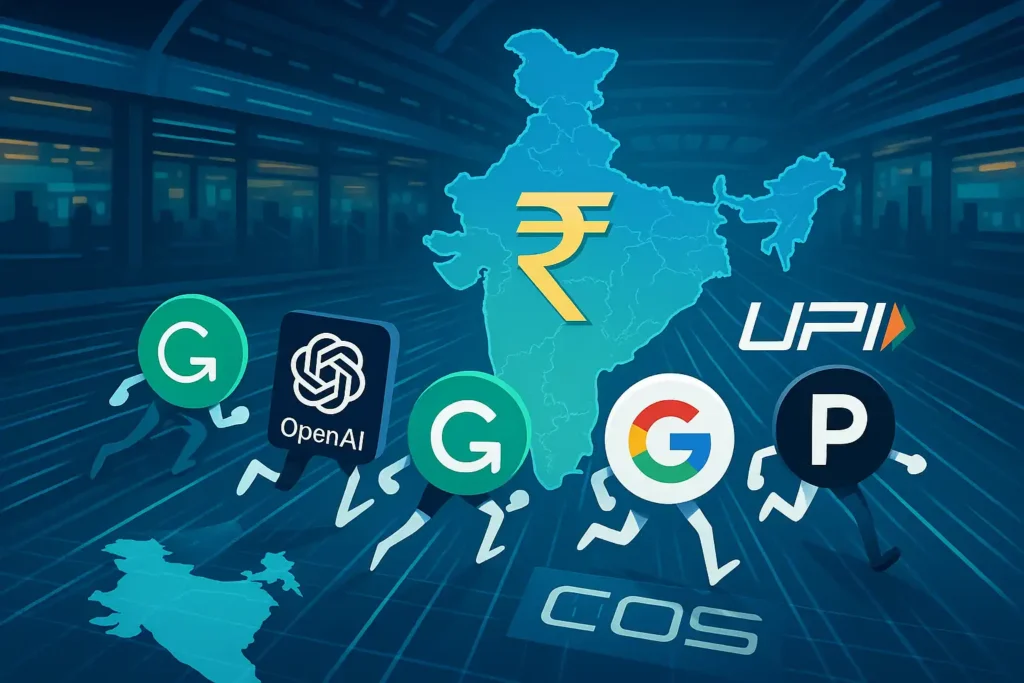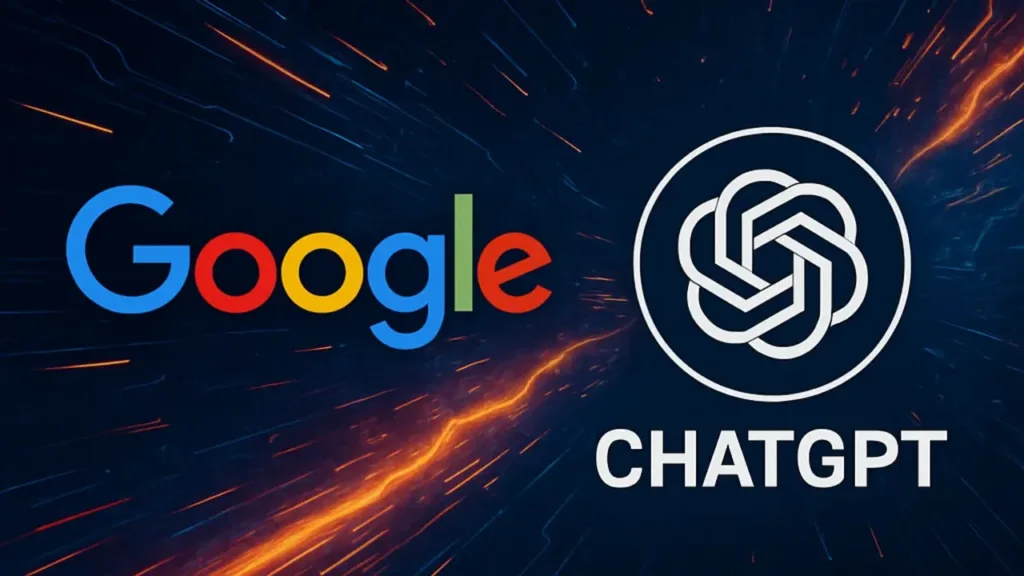Key Highlights
- OpenAI launches ChatGPT Go in India at just ₹399/month, down from ₹1,999.
- Grammarly slashes subscription rates to ₹250/month for Indian users.
- Perplexity partners with Airtel, offering its premium plan (worth ₹17,000/year) free.
- Google introduces free access for students to advanced AI tools and 2TB cloud storage.
- India’s 1.4 billion digital users make it a major AI battleground.

The AI Price War Begins
The global race to win AI users has entered a new phase, and India is right at the center of it. In just a few weeks, some of the world’s biggest AI companies, OpenAI, Grammarly, Google, and Perplexity, have either slashed prices or rolled out exclusive offers for the Indian market.
For OpenAI, the maker of ChatGPT, this means launching ChatGPT Go at just ₹399 per month. That’s a sharp cut from its earlier price of ₹1,999, making advanced AI tools far more affordable for students, freelancers, and professionals across India.
Grammarly, known for its AI-powered grammar and writing assistance, has also lowered its subscription to ₹250/month (billed annually) nearly 75% cheaper than its earlier plan.
The timing is no coincidence. These moves come just after Perplexity AI, a fast-growing ChatGPT rival, struck a deal with Airtel to give millions of the telecom giant’s users free access to its premium service, a plan normally costing ₹17,000 a year.
Google Joins the Race
Not wanting to be left behind, Google has rolled out free access for college students in India to its premium AI tools. This includes Google AI Pro, Deep Research, NotebookLM, and an additional 2TB of cloud storage. The goal is clear: build brand loyalty early among young digital natives.
By targeting students, Google is directly competing for the next generation of AI users, people who will grow up using these tools for education, work, and creativity.
Why India Matters
India has become the ground zero for AI adoption. With 1.4 billion people and one of the largest pools of young internet users, companies see it as the perfect market to scale fast.
“ChatGPT expects India to be its largest market by number of users very soon; so there is a focus on India,” said Jaspreet Bindra, an AI/GenAI industry analyst, in a statement to BusinessLine.
The combination of affordability, digital penetration, and youth adoption makes India not just a testing ground but also a future driver of global AI growth.
Read More
The Bigger Picture
This isn’t just about cheaper subscriptions. It’s about data and dominance. The more users these companies attract, the more data they collect — which in turn helps improve their AI models.
Globally, AI players are also experimenting with pricing. For instance, ChatGPT and Claude have announced a $1/month plan for the US government, showing how flexible companies can get depending on strategic needs.
But the India case is unique. The scale of price cuts here is sharper, and competition more intense, making it one of the most aggressive AI markets in the world right now.
What Users Should Know
For everyday users, this AI price war means better access at lower costs. Students can use advanced tools for free, professionals can now afford premium subscriptions, and even casual users can explore AI without breaking the bank.
However, there’s also a flipside: with so many options, users need to choose wisely. While affordability is important, the features, privacy policies, and reliability of each platform matter too.
Final Thoughts
India has officially become the battleground for AI subscriptions. OpenAI, Grammarly, Perplexity, and Google are cutting prices and offering freebies like never before. For users, it’s a golden opportunity. For companies, it’s a fight for market share, data, and long-term loyalty.
One thing is certain: as AI becomes more mainstream, India will play a leading role in shaping the future of how these technologies are used worldwide.
Sources: BusinessLine, Economic Times, Reuters



